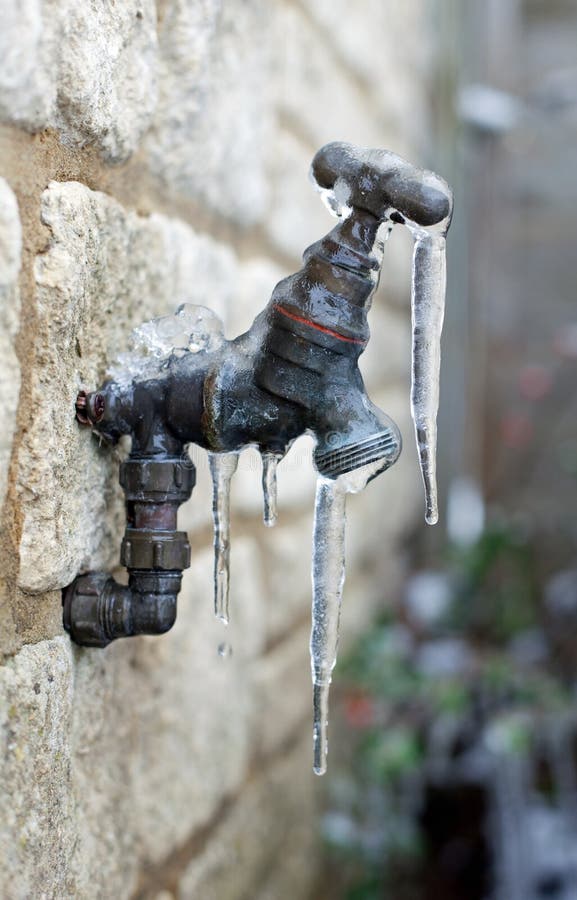How do you feel with regards to How To Avoid Freezing Pipes?

Winter can wreak havoc on your pipes, particularly by freezing pipelines. Right here's how to stop it from happening and what to do if it does.
Intro
As temperature levels decline, the risk of frozen pipelines rises, possibly bring about pricey fixings and water damage. Comprehending just how to avoid frozen pipelines is essential for house owners in cool environments.
Understanding Frozen Pipelines
What creates pipelines to freeze?
Pipes ice up when subjected to temperature levels listed below 32 ° F (0 ° C) for expanded durations. As water inside the pipes ices up, it expands, putting pressure on the pipe walls and possibly creating them to rupture.
Threats and problems
Frozen pipes can bring about water disturbances, property damage, and pricey repair work. Ruptured pipelines can flood homes and trigger comprehensive architectural damages.
Indications of Frozen Water Lines
Determining frozen pipelines early can stop them from rupturing.
Exactly how to identify frozen pipes
Try to find decreased water flow from taps, unusual smells or noises from pipelines, and visible frost on revealed pipes.
Avoidance Tips
Insulating prone pipelines
Cover pipelines in insulation sleeves or use warm tape to secure them from freezing temperatures. Focus on pipes in unheated or outside areas of the home.
Home heating strategies
Keep interior spaces properly warmed, specifically areas with plumbing. Open up cupboard doors to allow cozy air to distribute around pipes under sinks.
Safeguarding Outdoor Pipes
Garden pipes and outdoor taps
Disconnect and drain pipes garden hose pipes before wintertime. Install frost-proof faucets or cover exterior faucets with insulated caps.
What to Do If Your Pipes Freeze
Immediate actions to take
If you suspect frozen pipelines, maintain faucets available to relieve pressure as the ice melts. Make use of a hairdryer or towels soaked in hot water to thaw pipes gradually.
Long-Term Solutions
Structural adjustments
Think about rerouting pipelines far from outside walls or unheated locations. Add additional insulation to attics, cellars, and crawl spaces.
Upgrading insulation
Invest in top quality insulation for pipelines, attics, and wall surfaces. Appropriate insulation helps keep consistent temperature levels and minimizes the risk of icy pipelines.
Final thought
Preventing frozen pipelines requires aggressive measures and quick feedbacks. By understanding the reasons, indicators, and preventive measures, house owners can protect their pipes throughout cold weather.
5 Ways to Prevent Frozen Pipes
Drain Outdoor Faucets and Disconnect Hoses
First, close the shut-off valve that controls the flow of water in the pipe to your outdoor faucet. Then, head outside to disconnect and drain your hose and open the outdoor faucet to allow the water to completely drain out of the line. Turn off the faucet when done. Finally, head back to the shut-off valve and drain the remaining water inside the pipe into a bucket or container. Additionally, if you have a home irrigation system, you should consider hiring an expert to clear the system of water each year.
Insulate Pipes
One of the best and most cost-effective methods for preventing frozen water pipes is to wrap your pipes with insulation. This is especially important for areas in your home that aren’t exposed to heat, such as an attic. We suggest using foam sleeves, which can typically be found at your local hardware store.
Keep Heat Running at 65
Your pipes are located inside your walls, and the temperature there is much colder than the rest of the house. To prevent your pipes from freezing, The Insurance Information Institute suggests that you keep your home heated to at least 65 degrees, even when traveling. You may want to invest in smart devices that can keep an eye on the temperature in your home while you’re away.
Leave Water Dripping
Moving water — even a small trickle — can prevent ice from forming inside your pipes. When freezing temps are imminent, start a drip of water from all faucets that serve exposed pipes. Leaving a few faucets running will also help relieve pressure inside the pipes and help prevent a rupture if the water inside freezes.
Open Cupboard Doors
Warm your kitchen and bathroom pipes by opening cupboards and vanities. You should also leave your interior doors ajar to help warm air circulate evenly throughout your home.

We had been made aware of that write-up about 6 Ways to Prevent Frozen Pipes through someone on our other web property. Enjoyed our content? Please share it. Let other people discover it. I truly appreciate your readership.
Book An Estimate Now